Words: Theodora Negrea
Photography: Keiron Mayora
We are looking down at the city from the top of San Giusto hill. One building stands out from this viewing point. It is the Synagogue, one of the largest in Europe. Further to the West, the Serbian Orthodox Church. Here and there, other buildings look nothing like the usual Italian urban landscape.
In contrast to other Italian cities, one will quickly note the absence of the typical Catholic Dome governing over the city. Instead, the view is dominated by a set of buildings testimony to Trieste’s multicultural past and present. In this article, I’m inviting you on a journey through the different neighborhoods and public spaces that show the diversity of faiths present in the city. If you feel inspired, take advantage of a sunny Saturday, grab a copy of this magazine and go explore the itinerary on your own, with a friend or family member, or a fellow expat. At the end of it, you’ll be sure to discover a whole new side of Trieste, one of fascinating, contrasting parts.
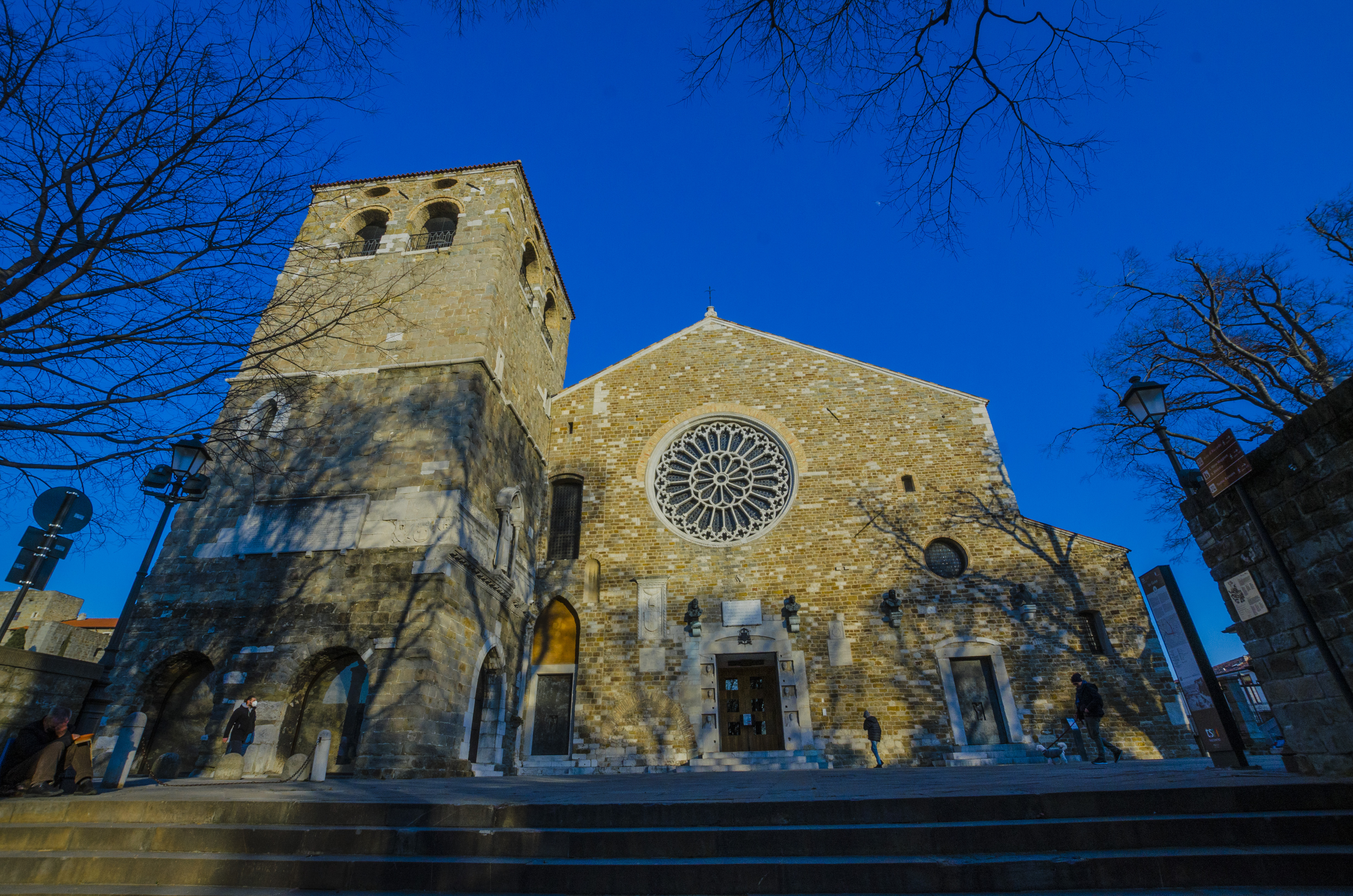
Our journey starts right here at our viewing point, the San Giusto Cathedral. Dedicated to Trieste’s patron, San Giusto, this place started as a defending fortress, then a Roman forum. In fact, if you visit the San Giusto castle, you’ll be able to admire a fascinating reconstruction of the houses and streets of then Tergeste, including the Cathedral’s early form; an investigative and practical work that took years to complete. Today, the cathedral welcomes visitors with a striking interior made of Byzantine-Ravenna mosaics and four beautiful aisles and is a must-see in Trieste.
Why visit? Visit for a chance to see the ‘halberd of Saint Sergius’, the weapon you may know as the emblem of Trieste.
Hours: The Cathedral is open on week days from 8.00 to 18.30, and on Sundays and public holidays from 9.00 to 19.30. You can check the times of the services and other events on the Cathedral’s website www.sangiustomartire.it
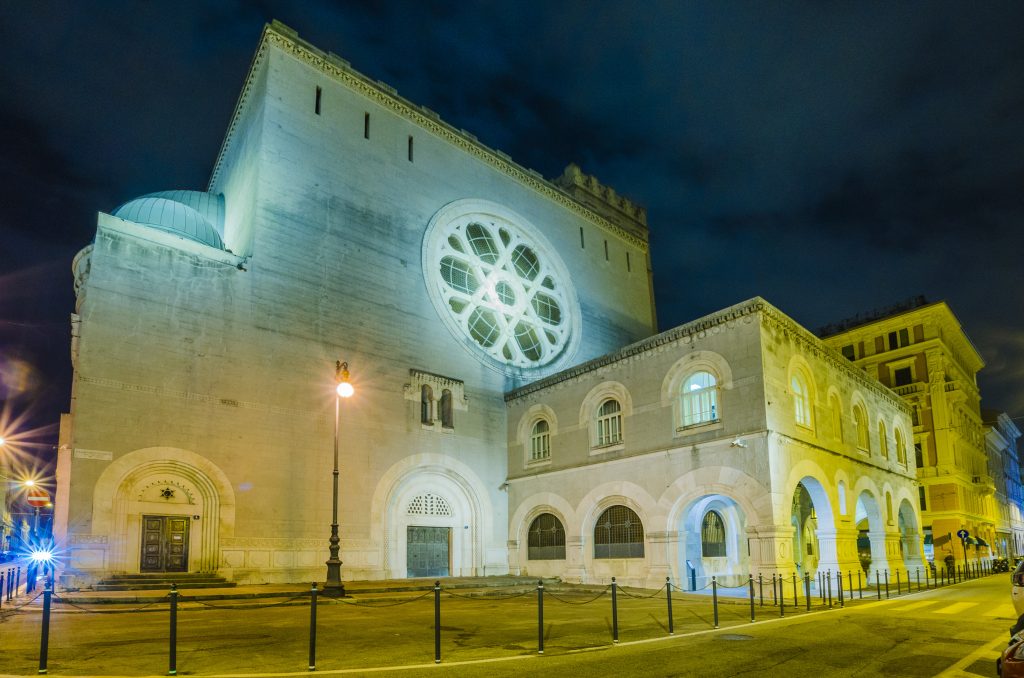
Continuing our journey and descending from San Giusto, we first venture further outside of the city center, walking towards Corso Italia, then taking a left turn on Via San Lazzaro and another turn to Via Cesare Battisti. It is here that we find the Synagogue of Trieste, one of the largest in Europe. Opened in 1912, the synagogue replaced the previous four. Just between 500 and 700 Jewish people live in Trieste today, but previous representatives of the community include Umberto Saba and Italo Svevo (pseudonym of Aron Hector Schimtz) who both spent some years working in the city. When you visit, make sure to take a look at the synagogue from the different facades, each unique yet complimentary.
Why visit? Admire the imposing architecture of one of the largest synagogues in Europe and learn about the history of the local Jewish community. While you’re around the neighborhood, stop by Caffe San Marco.
Hours: Currently, the synagogue can be visited by appointment according to a specific timetable on Mondays (from 17:00), Tuesdays (from 10:30), and Wednesdays (from 17:00). Best to call in advance. There is an entrance fee of 5 euro for adults and 3 euro for children and students.

Time to move to the next step in our itinerary. From here we turn back towards the sea with a detour through Piazza Oberdan, passing by the Hotel Balkan, today School for Interpreters but previously a cultural center of the Slovenian community. And within just a few more steps we reach the Evangelical Lutheran church of Trieste on Largo Panfili I. A beautiful building in neo-gothic style, it gives Trieste the air of perhaps a German or French town. Once a month, the Sunday service here is held in German, testimony to the roots of the community.
Why visit? Discover a lesser-known part of Trieste and join one of the music concerts organized by the Church.
Hours: The church is open Wednesdays, Saturdays, and Sundays from 16:00 to 19:00

From here we turn towards Via Rossini and the Canal Grande and then take a short walk back in towards the Piazza Sant’Antonio Nuovo where we find the Church with the same name, the one you’re likely to see on most tourist guides of Trieste. Built between 1825 and 1849, this is the largest church of the city with neoclassical elements worth a closer look. Turn your gaze towards the tympanum decorated with the statues of Trieste’s martyrs: San Sevolo, Santa Eufemia, San Giusto, San Sergio, Santa Tecla, and Sant’Apollinare. If you’re around, make sure you stop by the local market which makes for a wonderful weekend walk and people-watching opportunity. And, if you’d rather stop for a coffee, you’re guaranteed the best view of the square from the tables of Antico Caffè Torinese.
Why visit? Admire an emblematic landmark of Trieste and visit the local fruit & vegetable market.
Hours: The Church is open every day, just take a look at the times of the service in advance.
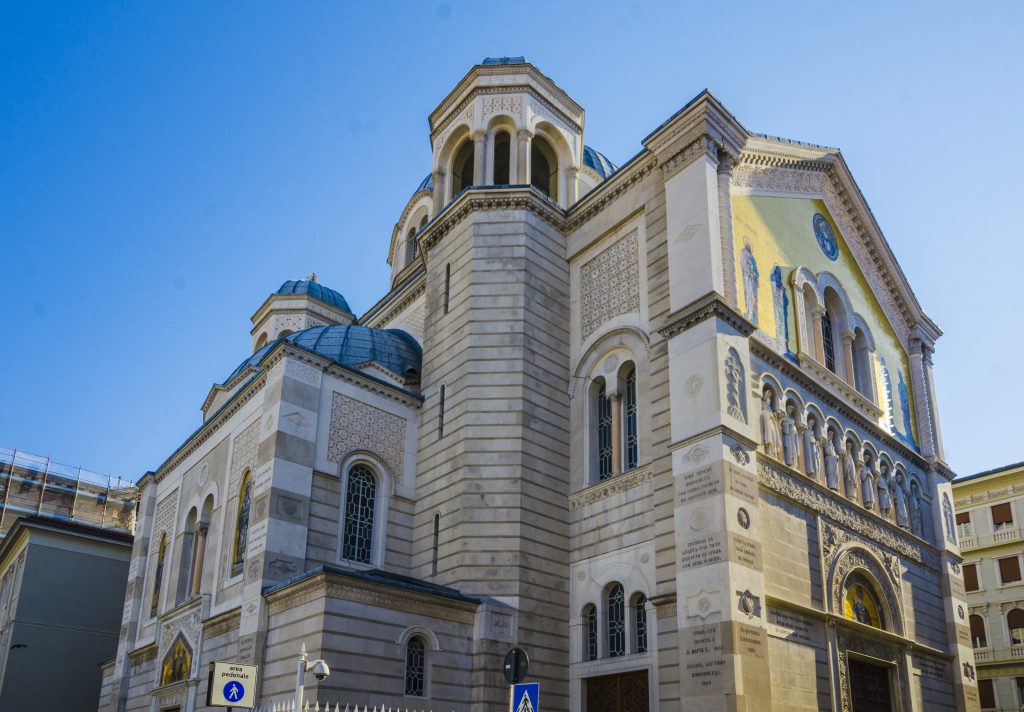
Heading back towards the sea on the other side of the Canal Grande, we pass the Serbian Orthodox Church, on Via San Spiridione 9. This Church is a beautiful edifice with impressive decorative elements, including columns made of Verona marble and a candelabrum donated by Russian Duke Paul Petrovich Romanov during one of his visits in Trieste. The outside of the temple is covered in stones from Carso and Istria. Today you can still find six of the drawings presented for this architectural project at the Archives of the Serbian Orthodox community.
Why visit? This is certainly one church worth visiting on the inside, due to all its beautiful decorations and rich history.
Hours: Opening hours are Tuesdays to Saturdays from 08.30-12:30 and 16.00-19:00, and Sunday morning from 08:30-12:30. Double-check times of service on the website of the Serbian community on www.comunitaserba.org.
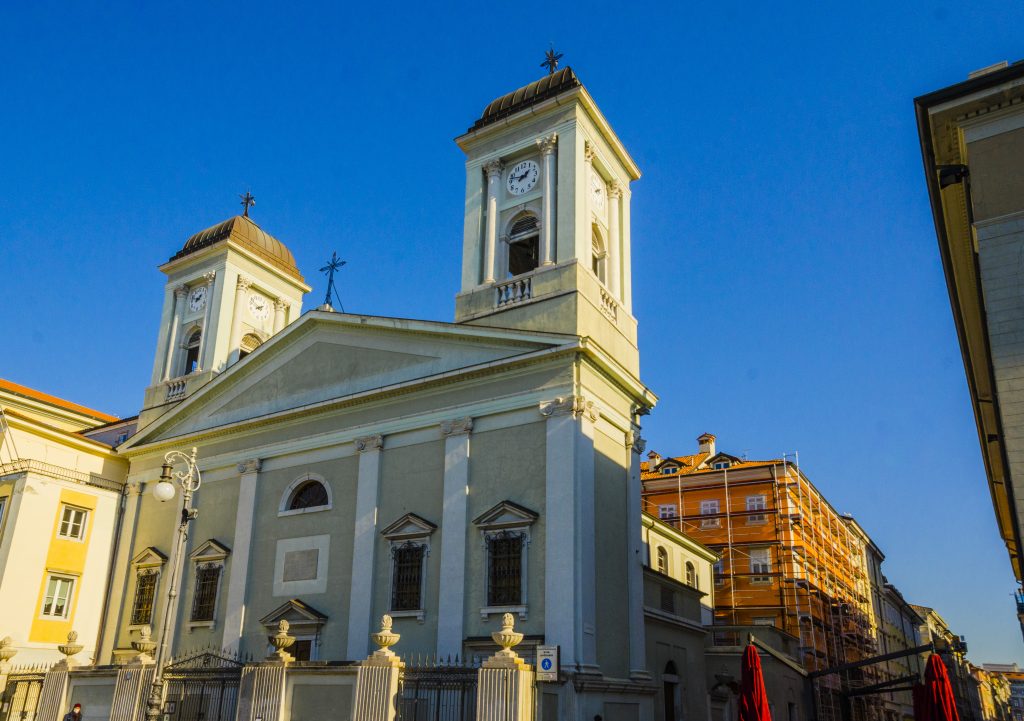
We’re now almost at the end of our tour. Reaching le Rive, we turn left, and just before Molo Audace, we arrive at the Greek Orthodox Church of San Nicolò, on Riva Tre Novembre . Not by chance, this edifice faces the sea, with which the community used to have a strong cultural (and commercial) bond. San Nicolò is also the patron of sailors and those generally involved in sea activities. The church got its present form after a redesign in neoclassical style by Matteo Pertsch.
Why visit? Take a moment to admire the interior in warm colors and wooden elements.
Hours: Opening hours are Tuesdays to Saturdays from 09:00-12:00 and 17:00-20:00, and Sunday morning from 09:00-12:00. Check the times of service beforehand.

Our short itinerary could end back in Piazza Unità, with a pause to admire the square and its sea views, or it could continue further for a circular (but slightly longer) path to Via Giustinelli where you’ll find the Armenian church. For a full circle, you can head back to San Giusto through Via S. Michele and visit the Anglican Church, a self-funded project supported by Anglo-Saxon families living in the area.
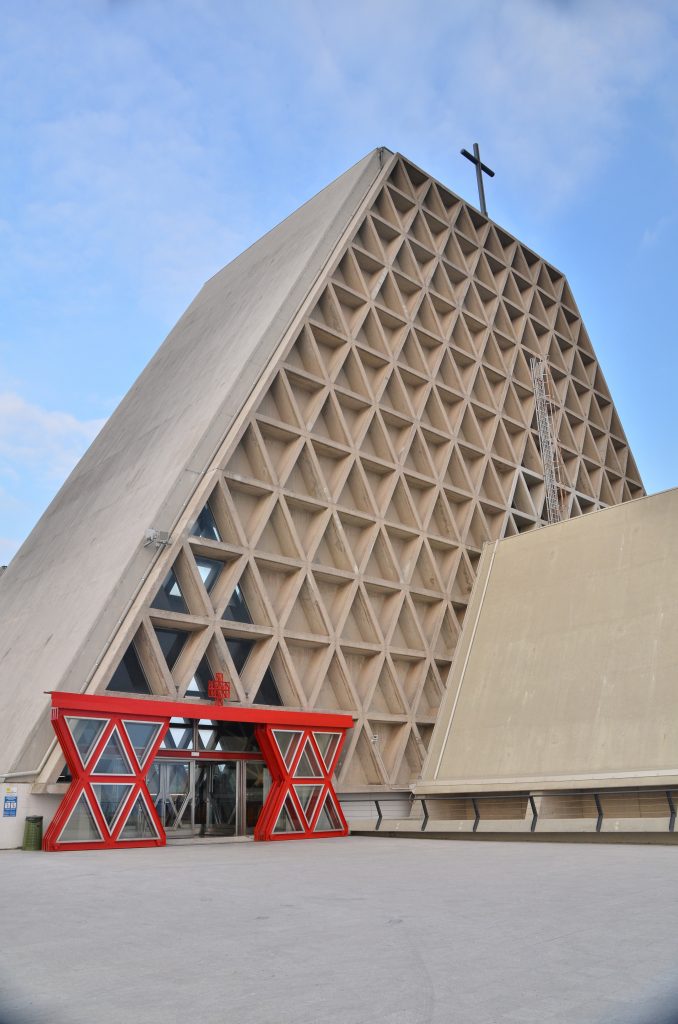
And for another day, schedule a visit to the affectionately called formaggino, the Sanctuary of Mariano di Monte Grisa, a sight you’re unlikely to have missed if you ever glanced upon the hills surrounding Piazza Unità. Visit to see a lovely panoramic view of the sea and Trieste, and while you’re there enjoy a walk on the Napoleonica trail.
Thank you for coming along on this journey, and I hope you’ll be inspired to go discover even more on your own. Happy exploring!






























Thank you so much for “IN TRIESTE”, and all the very interesting articles it contains.
I am a triestina but I learn a lot of things here…
Only a little clarification: you’re guaranteed the best view of Piazza Sant’Antonio Nuovo from the tables of Antico Caffé Stella Polare (not Torinese).
Thanks again for this unmissable website!
Grazie, I,be read Jan Morris’s Book, Trieste and The Meaning Of Nowhere. I took away from the book, that while Trieste is technically in Italy. The City is somewhat apart, doing to it’s Austro Hungarian influence. A very unique Place. New Orleans, with all it’s problems is a unique City also.